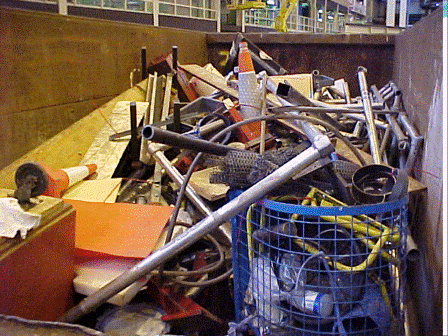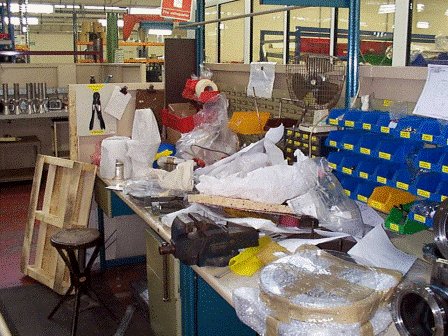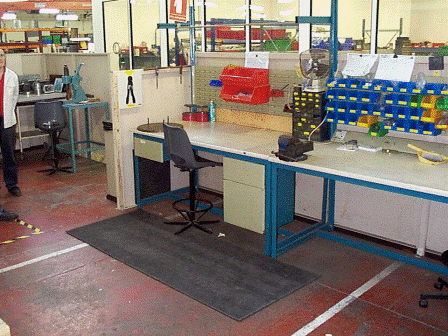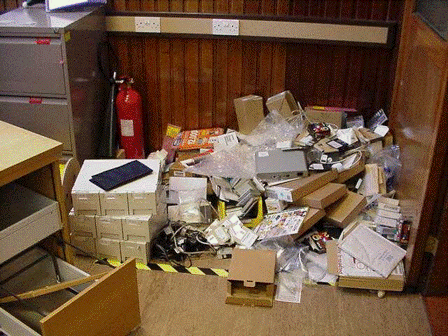5S Seiri
5S Seiri is the first stage of the lean tool known as 5S; 5S being a simple methodical Lean Tool for the organization of your workplace to ensure standardized working practices, more ergonomic and efficient methods, higher levels of quality and reliability and improved safety to name just a few of the benefits of 5S.
5S is not just about housekeeping as some believe it to be, it is a foundation stone of lean manufacturing and is an efficient tool for beginning the eradication of muda, mura and muri within your working environment. 5S tackles the seven wastes efficiently and effectively within your organization.
Purpose of 5S Seiri (Sort)
Sort, Clearing or Classify are the English equivalents of the Japanese term Seiri within 5S, within this first stage of 5S we aim to remove all unnecessary items from your working environment. This is more than just throwing away the junk within the cell, it is about removing everything that is not required on a regular basis.
Without this additional clutter within your cell you are left with only what you need, reducing the need to search through things to get what you really need or move things out of your way and so on. It is surprising how much can be removed within this stage of 5S
Classify is a term that many forget when implementing 5S, it is not just to remove clutter during this stage, we should also consider the usage requirements of the items within a cell, if things are used daily then they should be located in the cell. If they are required weekly, or monthly then if there is room within the cell then that is where you can keep them if they can be located so as not to cause any delays. Items however that have highly infrequent use may need to be located in a storage area freeing more space within the cell.
Conducting 5S Seiri
The team should go through every area of the cell; inside cupboards, under benches, behind machines (even inside the machines) to remove all items that are considered clutter. By nature we tend to hoard things just in case we need them later and start to accumulate items until those items begin to get in the way of our production.
If the item is clearly scrap then throw it away! If it has value, but does not belong in the area then move it to a quarantine area identified for this exercise, often called either a red-tag area or a crime-watch area.
If the item is too large to move or is attached to services and would require the attention of maintenance to remove it identify with a red-tag (more on red tags below.)
During this stage it is can be surprising how much has accumulated in the area, you will also find many items that people have just forgotten, and no longer know what they are. During exercises in the past I have found items that have been located in cells for many years, the worst cases being a pallet of material that had over 20 years of stock take tickets on it and you had to walk over to enter the cell and a “Best Kept Cell” of the month award that was over 10 years old on the notice board!
5S Seiri Examples
5S PowerPoint Presentation Download
5S Seiri Sort – 5S ppt free download
5S PDF Download
5S Seiri or Sort – Download 5S PDF free.
5S Sort Video
5S Red Tag Process
The Red Tag process in 5S can be can be conducted in a number of different ways; the red tag is a simple but highly obvious label that is used to identify items that people believe should be removed from the work cell.
They can be used within a “blitz” approach to 5S to identify items that the operators cannot physically remove from the working area themselves; other items being removed to a quarantine area rather than being left within the cell.
If 5S is conducted over a longer period or for ongoing applications of Seiri the Red Tag is used within the cell to identify items that people do not believe are required, if no one has a need to use the item within a specified period (usually 30 days) then the item is then removed from the cell.
5S Red Tag Presentation
5S Red Tag – Download red tag presentation in PowerPoint format
5S Red Tag PDF
5S Red Tag – Download 5S red tag PDF
5S Quarantine Auction.
Items that have been removed from the work cell as being either not required or because they are just a mystery to all involved; should have been located within a red-tag or crime watch quarantine area.
These items have some value (otherwise you would have thrown them out as scrap) so we will need to ascertain and agree a disposition for these items, this is usually achieved through an “auction”. Invite everyone that may have some idea what the items may be and who have an interest in their value, including someone who can write the items of if required.
Once you have everyone, go through each and every item piece by piece and decide whether they should be scrapped, recycled, stored or some other disposition. This should be continued until the quarantine area is emptied.
When you are conducting 5S as an ongoing exercise, items that have been red tagged within the working area should be removed to the quarantine area and disposition should be decided every month.
What follows 5S Seiri?
Once you have cleared your area of all unnecessary clutter is time to move onto the next stages of 5S (although in reality many of these stages are conducted in tandem); the next stage is 5S Seiton (Straighten, Simplify, Set in order, Configure) where you will organize the remaining items in your working area to ensure that things are efficient and safe. After this we move onto 5S Seiso (Sweep, shine, Scrub, Clean and Check) where the area is cleaned from top to bottom.
The real work then starts with 5S Seiketsu (Standardize, stabilize, Conformity) where we work on ensuring we have standard practices both within the individual working area and across processes, this is all then maintained and continually improved by implementing 5S Shitsuke (Sustain, self discipline, custom and practice.)
If you have any questions or observations regarding Lean 5S Seiri (Sort, Clearing, Classify) or would just like to share your experiences with regard to implementing 5S in your workplace; feel free to use the area below.





Dear Sir,
Kindly provide a PDF link for the detailed presentation on 5S. Articles published is very good.
Pl help.
Hi Srinivas.
You will find all of the PDF and presentations on 5S here: http://leanmanufacturingtools.org/1014/5s-training-presentations/